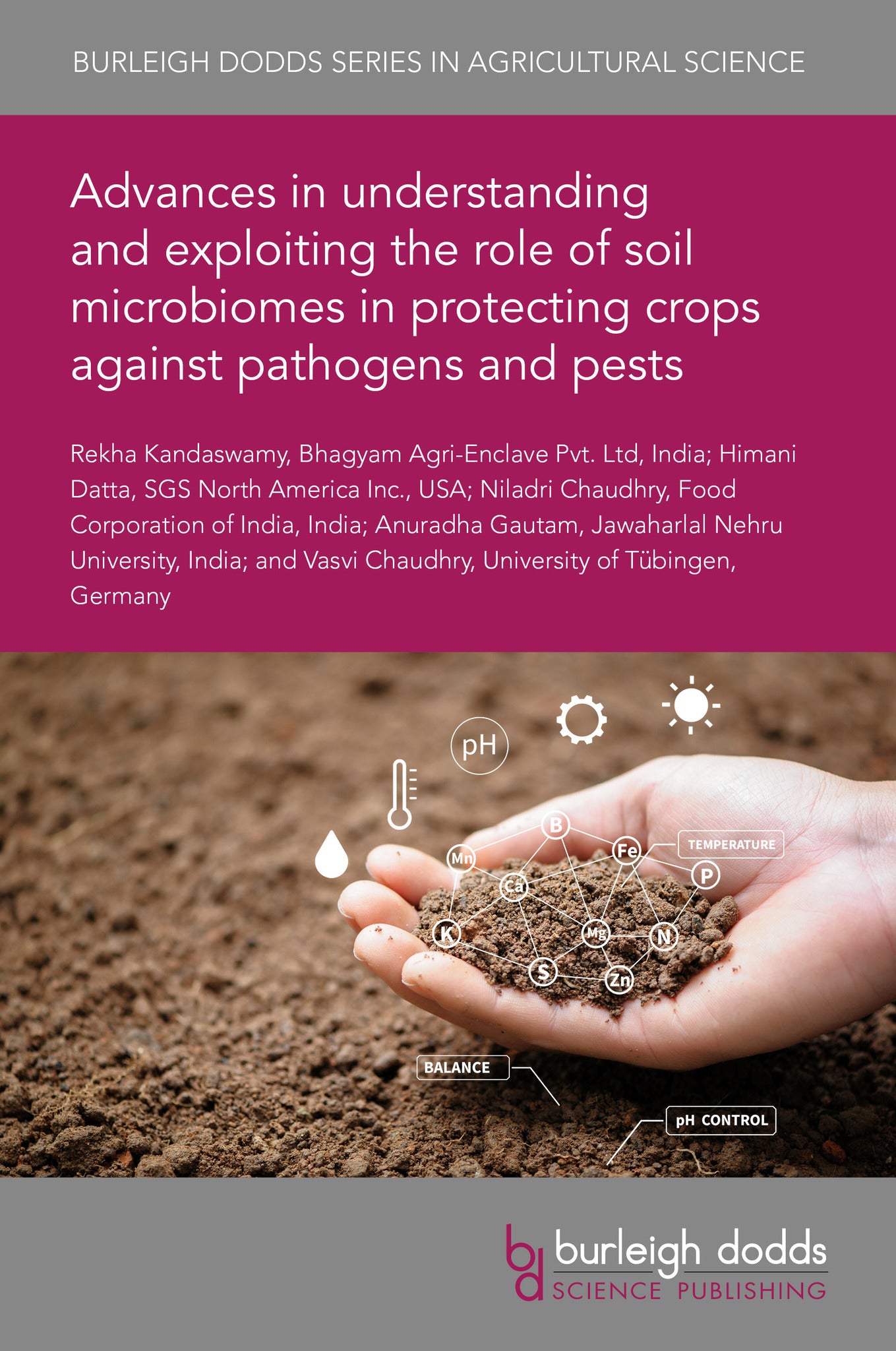We're sorry. An error has occurred
Please cancel or retry.
Advances in understanding and exploiting the role of soil microbiomes in protecting crops against pathogens and pests

Some error occured while loading the Quick View. Please close the Quick View and try reloading the page.
Couldn't load pickup availability
- Format:
-
29 May 2025

The soil microbiome has the potential to protect crop plants from biotic stress caused by pests and pathogens. Studies have, for example, shown the role of root exudates in recruiting and enriching beneficial bacteria to protect against pathogens and pests, paving the way for developing strategies for microbiome engineering. However, due to the complex and dynamic nature of soil microbiomes, designing microbiome-focused crop protection strategies remains a challenge. This chapter reviews different interactions between the microbiome components, microbe-induced plant-defense-response mechanisms, and strategies for engineering the soil microbiome to protect crop plants against pests and pathogens.

TECHNOLOGY & ENGINEERING / Agriculture / Agronomy / Soil Science, Soil science and management, TECHNOLOGY & ENGINEERING / Agriculture / Agronomy / Crop Science, TECHNOLOGY & ENGINEERING / Agriculture / Sustainable Agriculture, TECHNOLOGY & ENGINEERING / Pest Control, Agronomy and crop production, Sustainable agriculture, Pest control / plant diseases

- 1 Introduction
- 2 Protective interactions between plant root exudates and the soil microbiome
- 3 Biomolecules with a protective function against pathogen and pest attack
- 4 Microbiome-related defense mechanisms against pathogen and pest attack
- 5 Engineering the soil microbiome for improved protection against pathogens and pests
- 6 Conclusion
- 7 Acknowledgments
- 8 References



